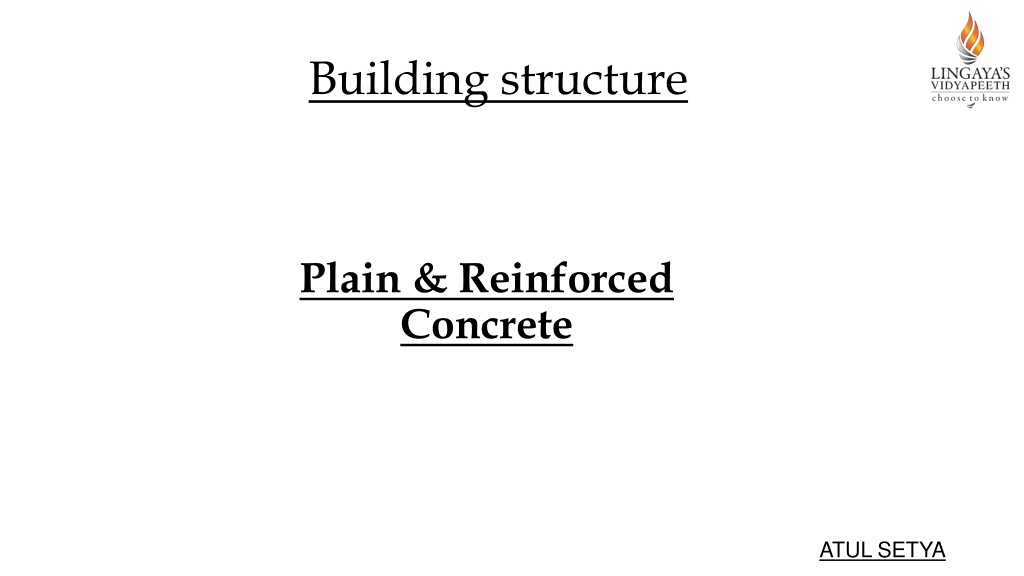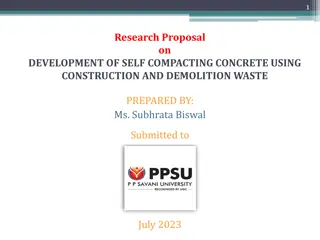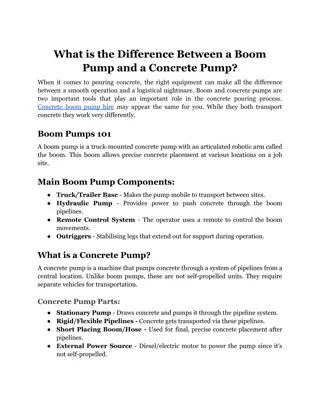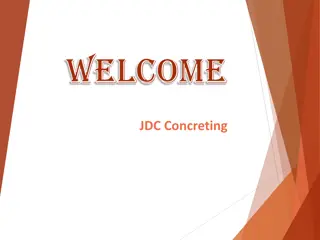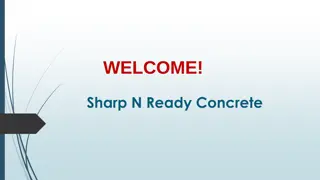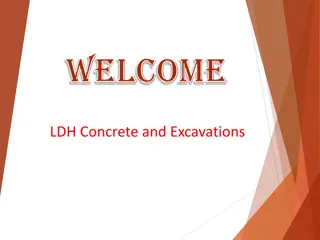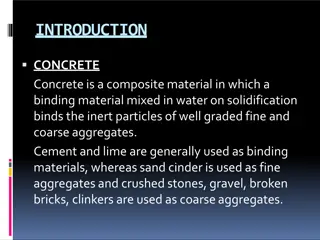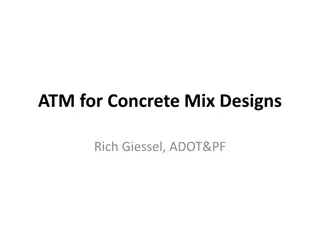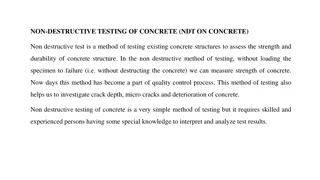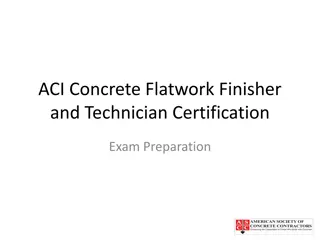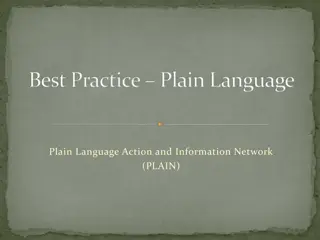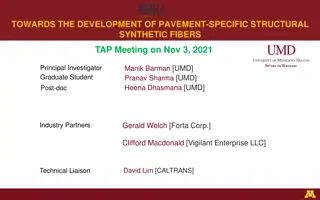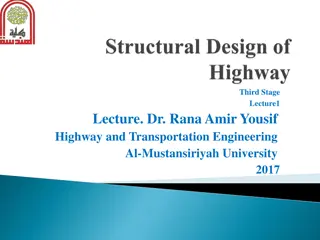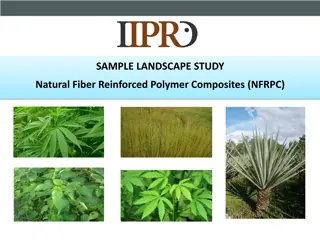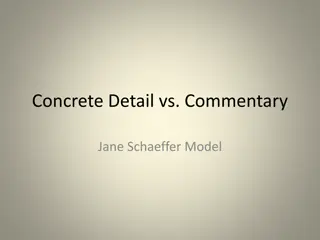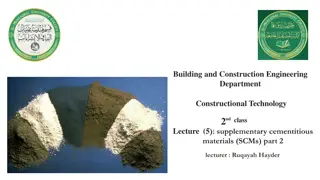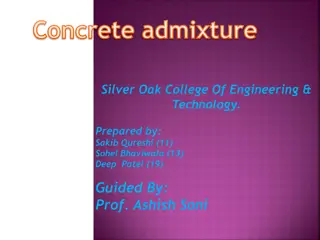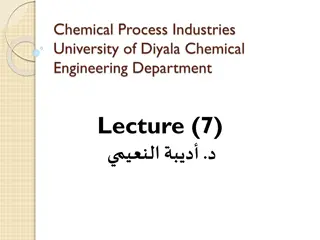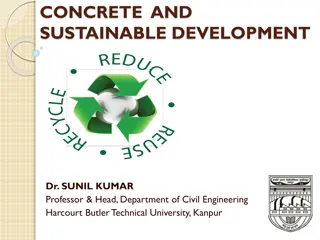Understanding Plain & Reinforced Concrete Structures
Concrete is a vital construction material, with Plain Cement Concrete (PCC) and Reinforced Cement Concrete (RCC) being common types. PCC lacks reinforcement and is strong in compression but weak in tension. On the other hand, RCC combines concrete with steel reinforcement for improved tensile strength. The mechanism of load transfer in concrete structures ensures the safe distribution of loads to the ground. Concrete construction offers advantages such as control over shape and dimensions, availability of materials, economic structures, good insulation properties, strong bond between steel and concrete, stability, and aesthetic appeal.
Download Presentation

Please find below an Image/Link to download the presentation.
The content on the website is provided AS IS for your information and personal use only. It may not be sold, licensed, or shared on other websites without obtaining consent from the author. Download presentation by click this link. If you encounter any issues during the download, it is possible that the publisher has removed the file from their server.
E N D
Presentation Transcript
Building structure Plain & Reinforced Concrete ATUL SETYA
Plain & Reinforced Concrete-1 Concrete Concrete is a mixture of cement, fine and coarse aggregate. Concrete mainly consists of a binding material and filler material. If filler material size is < 5mm it is fine aggregate and > 5mm is coarse aggregate. Plain Cement Concrete (PCC) Mixture of cement , sand and coarse aggregate without any reinforcement is known as PCC. PCC is strong in compression and week in tension. Its tensile strength is so small that it can be neglected in design. Reinforced Cement Concrete (RCC) Mixture of cement , sand and coarse aggregate with reinforcement is known as RCC. (Tensile strength is improved) 9/26/2024 2:30:49 PM 2
Plain & Reinforced Concrete-1 Reinforced Cement Concrete (RCC) contd.. Mix Proportion Cement : Sand : Crush 1 : 1.5 : 3 1 : 2 : 4 1 : 4 : 8 Water Cement Ratio (W/C) For a mix proportion of 1:2:4 and W/C = 0.5, if cement is 50 kg Sand = 2 x 50 = 100 Kg Crush = 4 x 50 = 200 Kg Batching By Weight Water = 50 x 0.5 = 25 Kg W/C = 0.5 0.6 9/26/2024 2:30:49 PM 3
Plain & Reinforced Concrete-1 Mechanism of Load Transfer Load Function of structure is to transfer all the loads safely to ground. Roof Surface Roof Slab A particular structural member transfers load to other structural member. Beams Column Foundation Sub Soil 9/26/2024 2:30:49 PM 4
Plain & Reinforced Concrete-1 Merits of Concrete Construction 1. Good Control over cross sectional dimensions and Shape One of the major advantage of concrete structures is the full control over the dimensions and structural shape. Any size and shape can be obtained by preparing the formwork accordingly. 2. Availability of Materials All the constituent materials are earthen materials (cement, sand, crush) and easily available in abundance. 3. Economic Structures All the materials are easily available so structures are economical. 4. Good Insulation Concrete is a good insulator of Noise & heat and does not allow them to transmit completely. 9/26/2024 2:30:49 PM 5
Plain & Reinforced Concrete-1 Merits of Concrete Construction (contd ) 5. Good Binding Between Steel and Concrete there is a very good development of bond between steel and concrete. 6. Stable Structure Concrete is strong in compression but week in tension and steel as strong in tension so their combination give a strong stable structure. 7. Less Chances of Buckling Concrete members are not slim like steel members so chances of buckling are much less. 8. Aesthetics concrete structures are aesthetically good and cladding is not required 9/26/2024 2:30:49 PM 6
Plain & Reinforced Concrete-1 Merits of Concrete Construction (contd ) 9. Lesser Chances of Rusting steel reinforcement is enclosed in concrete so chances of rusting are reduced. Demerits of Concrete Construction 1. Week in tension Concrete is week in tension so large amount of steel is required. 2. Increased Self Weight Concrete structures have more self weight compared with steel structures so large cross-section is required only to resist self weight, making structure costly. 3. Cracking Unlike steel structures concrete structures can have cracks. More cracks with smaller width are better than one crack of larger width. 9/26/2024 2:30:49 PM 7
Plain & Reinforced Concrete-1 Demerits of Concrete Construction 4. Unpredictable Behavior If same conditions are provided for mixing, placing and curing even then properties can differ for the concrete prepared at two different times. 5. Inelastic Behavior concrete is an inelastic material, its stress-strains curve is not straight so its behavior is more difficult to understand. 6. Shrinkage and Creep Shrinkage is reduction in volume. It takes place due to loss of water even when no load is acting over it. Creep is reduction in volume due to sustained loading when it acts for long duration. This problem is not in steel structures. 7. Limited Industrial Behavior Most of the time concrete is cast-in-situ so it has limited industrial behavior. 9/26/2024 2:30:49 PM 8
Plain & Reinforced Concrete-1 Specification & Codes These are rules given by various organizations in order to guide the designers for safe and economical design of structures Various Codes of Practices are 1. ACI 318-05 By American Concrete Institute. For general concrete constructions (buildings) 2. AASHTO Specifications for Concrete Bridges. By American Association of State Highway and Transportation Officials. 3. ASTM (American Standards for Testing and Materials) for testing of materials. 9/26/2024 2:30:49 PM 9
Plain & Reinforced Concrete-1 Specification & Codes (contd ) No code or design specification can be construed as substitute for sound engineering judgment in the design of concrete structures. In the structural practice, special circumstances are frequently encountered where code provisions can only serve as a guide, and engineer must rely upon a firm understanding of the basic principles of structural mechanics applied to reinforced or pre-stressed concrete, and the intimate knowledge of nature of materials 9/26/2024 2:30:49 PM 10
